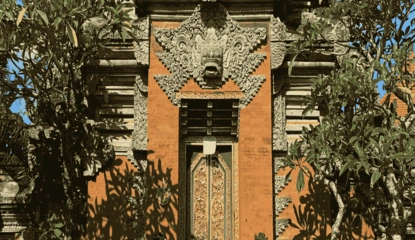North Sumatra Province in Indonesia is home to remarkable ethnic and linguistic diversity, with the Batak language standing out as one of the region's most vibrant and culturally significant languages. Spoken by the indigenous Batak people, the Batak language consists of several dialects that form a key part of their identity, rich with history, oral traditions, and cultural practices. The language is deeply rooted in the Batak people’s way of life and reflects their beliefs, values, and historical ties to their ancestral land.
Origins and History of the Batak Language
The Batak language is an Austronesian language, a branch of the Malayo-Polynesian language family that is widely spoken throughout Southeast Asia and the Pacific. The Batak people, who are indigenous to the highland regions of North Sumatra, have used this language for centuries as their primary means of communication.
Spread and Evolution
The language likely evolved in the isolated highlands of North Sumatra, where the Batak people developed unique customs, arts, and oral traditions. Due to the Batak people's relatively isolated geography, especially during pre-modern times, the language remained distinct, developing into several dialects to match the needs of diverse Batak subethnic groups. The arrival of explorers, traders, and missionaries eventually introduced new influences, particularly during the spread of Christianity and Islam within the Batak lands.
Major Dialects of the Batak Language
The Batak language is not a singular, unified language but rather a family of closely related languages or dialects, each spoken by a different Batak subethnic group. While these dialects share core similarities, they also have unique characteristics, reflecting the diversity of Batak culture.
- Toba Batak
- Area: The Toba Batak dialect is spoken around Lake Toba, the heartland of the Toba Batak ethnic group.
- Features: Toba Batak is considered the most widely spoken and historically influential Batak language, deeply tied to Batak traditions and literature.
- Cultural Significance: As the cultural and linguistic “standard,” Toba Batak has been the primary focus of linguistic research and preservation efforts.
- Karo Batak
- Area: Spoken in the Karo Highlands, particularly around the towns of Berastagi and Kabanjahe.
- Unique Traits: Karo Batak features variances in vocabulary and pronunciation that make it distinct from the Toba dialect. It plays a significant role in everyday communication and traditional rituals of the Karo people.
- Simalungun Batak
- Area: Simalungun Regency, an area near Lake Toba.
- Distinctiveness: Known for its tonal features and unique expressions, Simalungun Batak is used both in daily life and traditional ceremonies.
- Mandailing Batak
- Area: Spoken in the southern parts of North Sumatra and parts of West Sumatra Province.
- Cultural Significance: The Mandailing Batak dialect is closely tied to traditional practices like oral poetry (andung-andung) and storytelling.
- Pakpak Batak
- Area: The Pakpak highlands in Dairi and Pakpak Barat Regencies.
- Characteristics: Pakpak Batak features distinct regional accents that reflect the rural lifestyle and agricultural traditions of the Pakpak community.
- Angkola Batak
- Area: Found in the southern regions of North Sumatra, near Mandailing.
- Connection to Islam: This dialect has been influenced by the Islamic faith, which is more prominent in the Angkola community compared to other Batak subethnic groups.
Cultural Significance of the Batak Language
The Batak language is central to the Batak people’s cultural identity and plays a key role in their traditions and way of life. The Batak language is integral to important life events such as weddings, funerals, and other customary ceremonies. For instance, in the Mangupa ceremony, where blessings are given, specific phrases and prayers are recited in the Batak language to preserve tradition.
The language embodies the kinship system (marga), which is one of the most important pillars of Batak culture. Each clan (or marga) has its own speech patterns, proverbs, and linguistic nuances.











